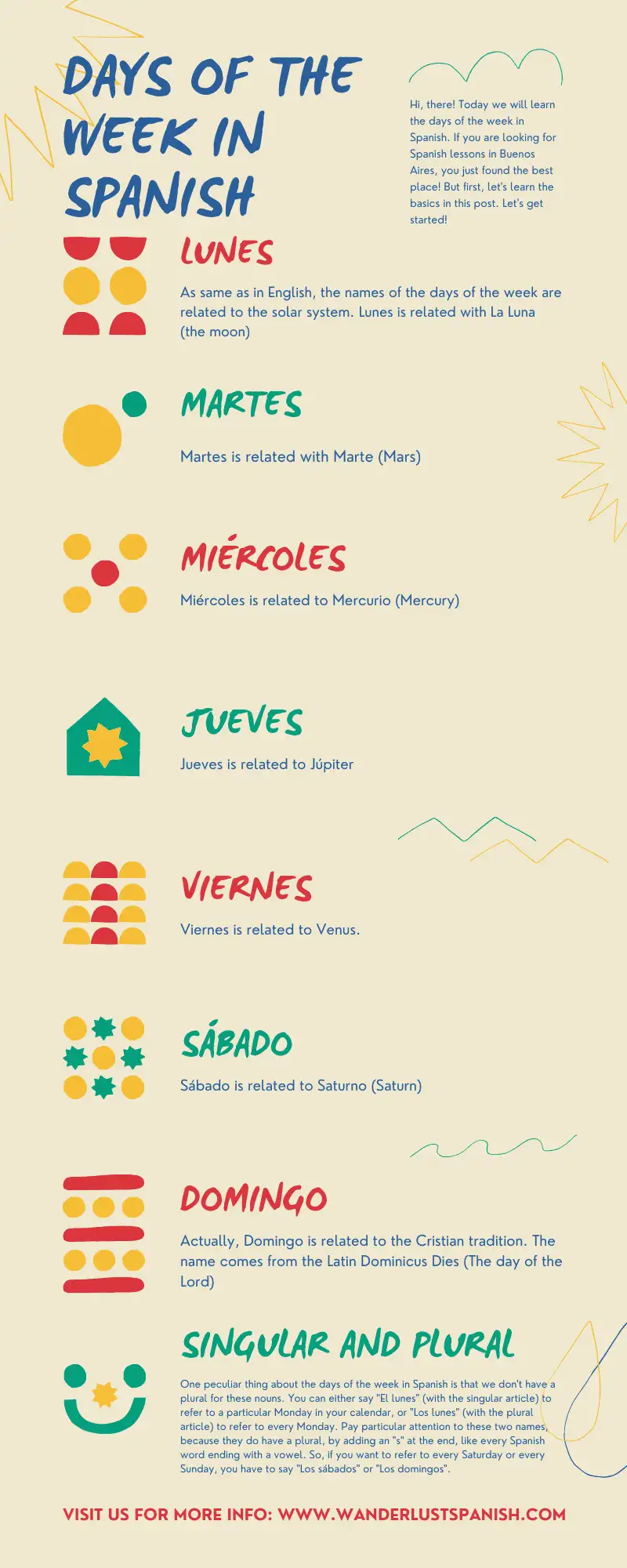If you are planning a trip to South America, or one of the Spanish Speaking Countries, you may need a few words when arriving. Of course, the ideal situation is to learn Spanish Online before your trip, and here we are! But, in the meantime, read this Basic Spanish for Travelling we did for you.
Let’s start with greetings. Don’t worry if you don’t speak any Spanish. Just saying the first words of a phrase in Spanish, will show you as an open person, who is willing to learn something new. And those first words are, of course, the greetings. So, let’s go with that list!
- ¡Hola! (Hello!)—> Note the “h” sound is silent, so the pronunciation is “¡Ola!”
- ¡Buenos días! (Good morning!); ¡Buenas tardes! (Good afternoon!); ¡Buenas noches! (Good evening!)
- ¡Buen día! (It’s just the short way of Buenos Días)
- ¿Cómo estás? (How are you?) ¿Cómo está? (How are you? in a formal situation)
- Mucho gusto (Nice to meet you!)
- Me llamo Sarah (I’m Sarah or My name is Sarah)—> Note that the “ll” sound is like and “e” sound or a “sh” sound depending on where you are. Both are okay, just have in mind “ll” is not just “l”.
- ¿Bien, y tú?, or: ¿Bien, y vos? (I’m fine, and you?) —> Using “Tú” or “Vos” depending on in which country you are. Both means “you” and everyone understands if you use one or the other, don’t worry too much about that.
- ¿Cómo te llamas? (What’s your name?)
These are not greetings but they are very basic, so don’t forget the magic words “Por favor” (Please) and “Gracias” (Thanks).
When it comes to express something you need, you will have to use the verb “querer”, which means “to want”. So, just add everything you want after the conjugation of querer:
- Yo quiero…(I want…)
- Una cerveza (a beer)
- Una empanada (an empanada)
- Habitación (a room)
The polite version of “Yo quiero” es “yo quisiera”. Don’t worry too much if you don’t remember this, but have it in mind because you may hear it from people.
Basic Spanish for Travelling: location
Now you are in the street or in a restaurant and you are a little bit lost. It’s time to start using our magic wor: donde. “Donde” means “Where”, so here you have a list of common phrases you may need:
- ¿Dónde está la calle San Martín? (Where is San Martin Street?)
- ¿Dónde está el baño? (Where is the bathroom?)
- ¿Dónde está el supermercado? (Where is the supermarket?)
- ¿Hay un supermercado cerca? (Is there a supermarket around?)
If you need to express you don’t understand what people say, you can just say or ask:
- Disculpe (Sorry), no hablo español (I don’t speak Spanish), ¿podría hablar más lento? (Could you speak slower?)

To answer you about directions, people will use words like “straight”, “left”, “right”, etc. Let’s see those words:
- Derecho. Derecho means “straight”. For example “Sigue derecho por esta calle”—> Keep straight on this street.
- Derecha. Be careful! While “derecho” means straight, “derecha” means “right”, for example, “Dobla a la derecha” means “You turn right”.
- Izquierda means “left”.
- Enfrente means “across the street”
- Esquina means “corner (of the street)”
- Cuadra means “block” or “street”, so if someone says to you that the place you are looking for is “a dos cuadras” it means you are two blocks away.
Basic Spanish: restaurant
Not all the menus are in English and Spanish, so it’s important to know the basic words in there.
- Entradas means Starters
- Plato Principal means Main Dish
- Postre means Dessert
- Bebidas means Drinks (in general, not only with alcohol)
- La cuenta means “check”, so you can just say “La cuenta, por favor” (Check, please!)
Okay, that was all for today. Follow us for more content to learn Spanish. We have a trial class waiting for you, contact us today! See you in the next post!








